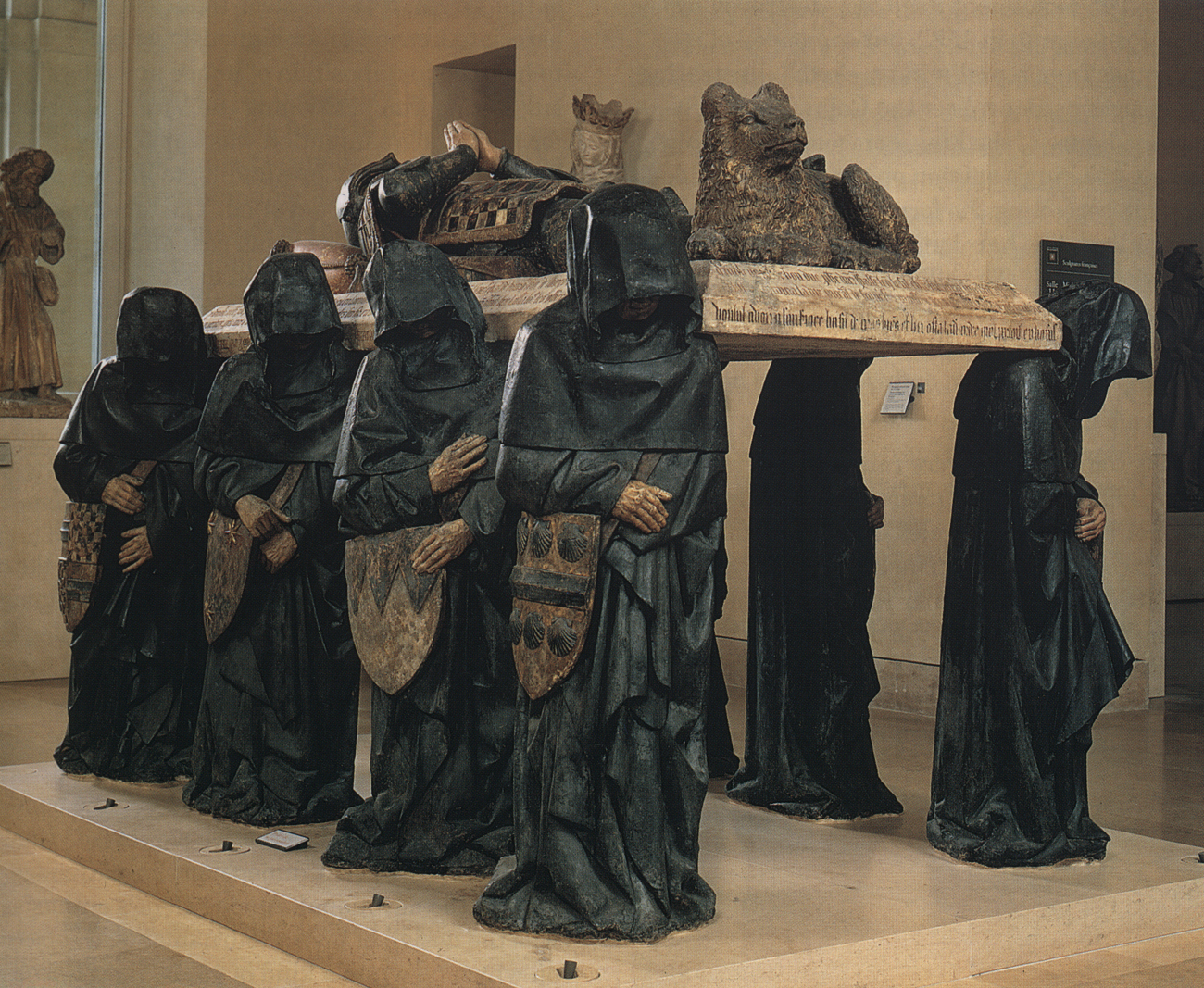Constructed out of polychromed limestone and embellished with gold and lead eight life-sized, hooded figures, each bearing a heraldic shield, hold on their shoulders a catafalque upon which rests the effigy of Philippe Pot of Citeaux. The figures are sombre and reverent, their heads bowed in grief. Although the figures are isolated in individual moments of sadness, they are united by their purpose as bearers of the effigy and together they project a collective message of mourning. The shields indicate that they are also united by blood, all of the house of Burgundy. Pot is wearing full armour and helm, over which he displays a short surcoat decorated with further heraldic colours and symbols, and he lies on an inscribed slab with his hands in prayer, a sword at his side and a lion at his feet – appropriate for a knight, nobleman and servant of the king.
Pot personally oversaw the design of his tomb, and it is clear that his values lay with lineage, status and religious devotion. The tomb’s grand design forms a visually coherent, unified scene: the eight pallbearers are equidistant and similarly dressed, creating a sense of common purpose. This coalition between the figures, along with the heraldic shield carried by each, highlights Pot’s concern with lineage. Conspicuous expenditure demonstrated wealth, and the scale of the tomb shows that Pot could afford to make a larger- than-life assertion about his status with some vivacity. It is the group of standing figures that achieves this and sets this artwork apart: it was not unusual to have a life-sized supine figure, but to have standing figures really was innovative. Furthermore, shrouding these eight men in black robes intensifies their presence and makes them somewhat mysterious, provoking a submissive yet thoughtful response in the viewer. In this way Pot reminds the viewer of his power as well as the respect that he commanded in others, but also alludes to a deeply devotional aspect because in these figures we see kinsmen in monastic robes, lost in the sadness that Pot hoped would be felt at his passing.
The tomb’s monumental appearance is a signifier of Pot’s self-assurance, a quality which he brought to the reign of Louis XI at a time when the French monarchy was re-fashioning itself and looking to make bold artistic statements such as this. Pot’s tomb would have contributed to the magnificence of an emerging new king and paved the way for others to patronise equally imposing artworks.
- Sarah


 Unknown Artist
Unknown Artist